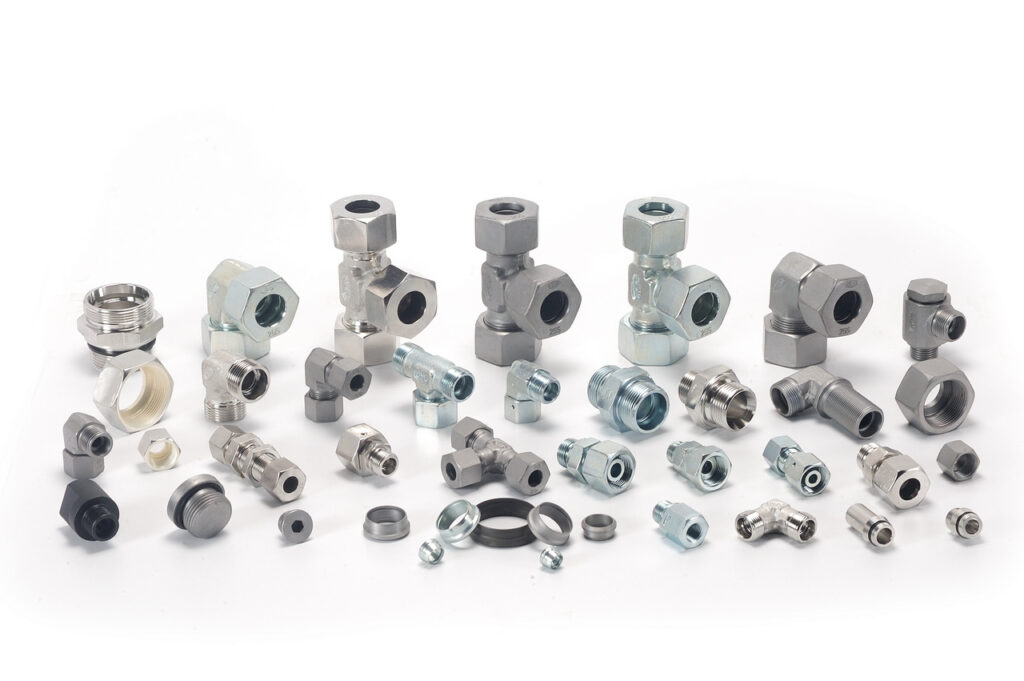
The company manufactures high-quality tube couplings, adaptors, pipe flanges, diagnostic couplings, and allied control valves under the brand name Hyloc for more than 50+ years.


When we talk about the term hydraulics – it is an extension of engineering and science that deals with the fluid, like oil, water and many other liquids. Hydraulic systems play a critical role in many industries such as construction, transportation, manufacturing, and many more.
These are used for various reasons like controlling industrial processes, powering machinery, and lifting heavy loads. In these systems, there is a tightly confined incompressible fluid medium that is used to transfer the energy from the power source to the actuators in the system.
Hydraulic systems uses many things like hydraulic tube fittings, adaptors, hydraulic hoses and hydraulic valves to transmit fluids. While we do talk about the use of hydraulics but the reality is that the environment has a significant impact on the performance and lifespan of hydraulic components, which we will discuss in this blog.
Let’s take a look at each component and how it is affected by the environment:
Hydraulic tube fittings are used to connect seamless tubes to pumps, valves, manifolds, cylinders and other parts of the hydraulic system. They are typically made of steel, stainless steel, copper and brass and are available in different sizes according to the requirements.
The main factor that affects this component is the temperature. Extreme temperature conditions, either elevated or sub-zero can affect them as they contract and expand due to behaviour of material properties from which they are manufactured, which in turn leads to leakages, failures, and even breakages at different points.
To explain further, if the hydraulic tube fittings are exposed to very high temperature, the material can become very soft and loses its strength over time which in turn leads to cracks or failure of the parts. On the other extreme, if the tubes face low temperatures then they can break off easily. Hydraulic systems should be made to combat this issue and inferior quality of material should not be used as this may affect the parts severely.
The second environmental factor that can affect the hydraulic tube fittings is humidity. This factor can cause corrosion in metal parts which further leads to multiple leaks and failures. While selecting the materials, it should be resistant to corrosion, such as stainless steel or copper.
The hydraulic hose is specially made to convey hydraulic fluid to or among hydraulic components, valves, actuators. They are flexible and usually constructed with several layers of reinforcement, this is because hydraulic systems work at very high pressures. The hoses are critical components and are often made of rubber, thermoplastic materials which are again available in many configurations and sizes. The environmental factor that affects these components is UV radiation. This can impact them and the materials can degrade and become brittle, which in turn leads to failure.
To fight this problem, the hydraulic hoses and fittings should be covered with protective sleeves or shields that help reduce the UV radiation problem. Also, the designing and positioning can be used in such a way that helps covers the hoses and fitting parts.
Another issue that affects the hydraulic hoses and fittings is the dust particles and debris that stick. These pollutants can enter the system and damage them by clogging or causing abrasion. To stop this from happening, the filtration system should be designed in such a manner that it removes the pollutants.
To conclude, the environment has a significant effect on the hydraulic systems. Environmental factors such as temperature, humidity and dirt particles. These will reduce the life span of the products. Various solutions are being developed and we should also be mindful while selecting the products. As the world is now shifting gears towards sustainable and environment-friendly material, manufacturers are also adopting the same technique.
“Take the first step and make it happen!” For any help and query email us to sales@hyloc.co.in
Call Now: +91 9686059806

The company manufactures high-quality tube couplings, adaptors, pipe flanges, diagnostic couplings, and allied control valves under the brand name Hyloc for more than 50+ years.
